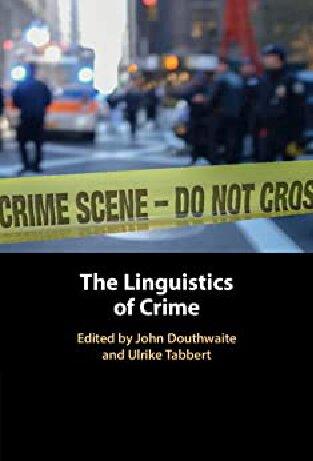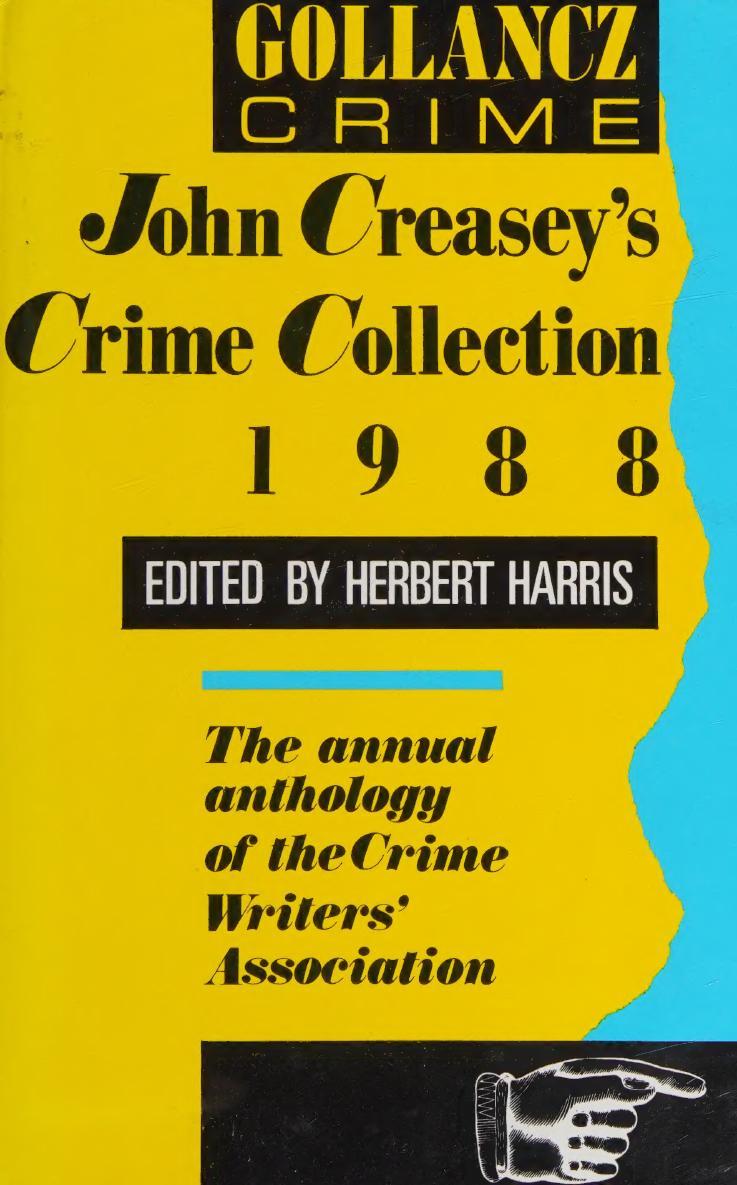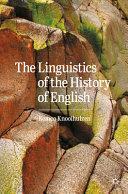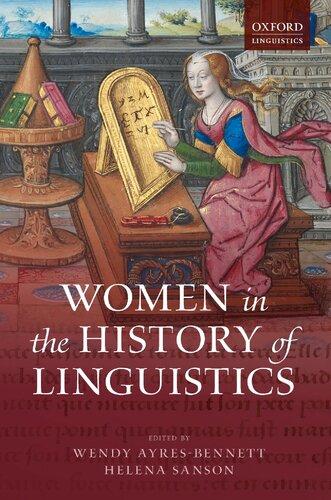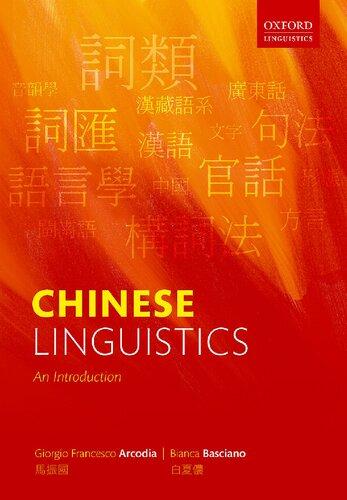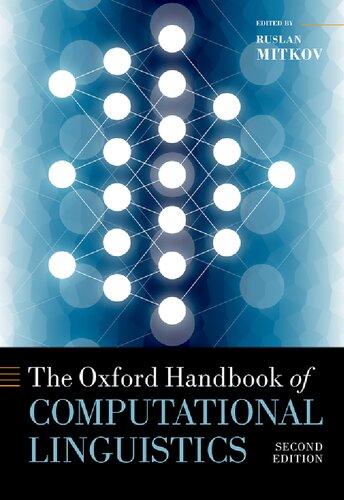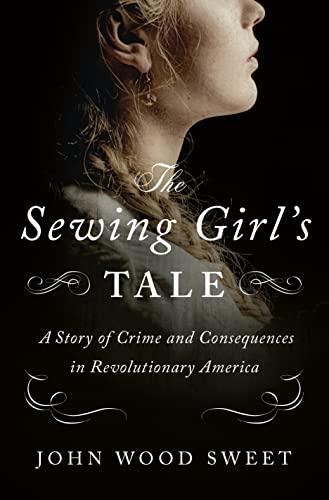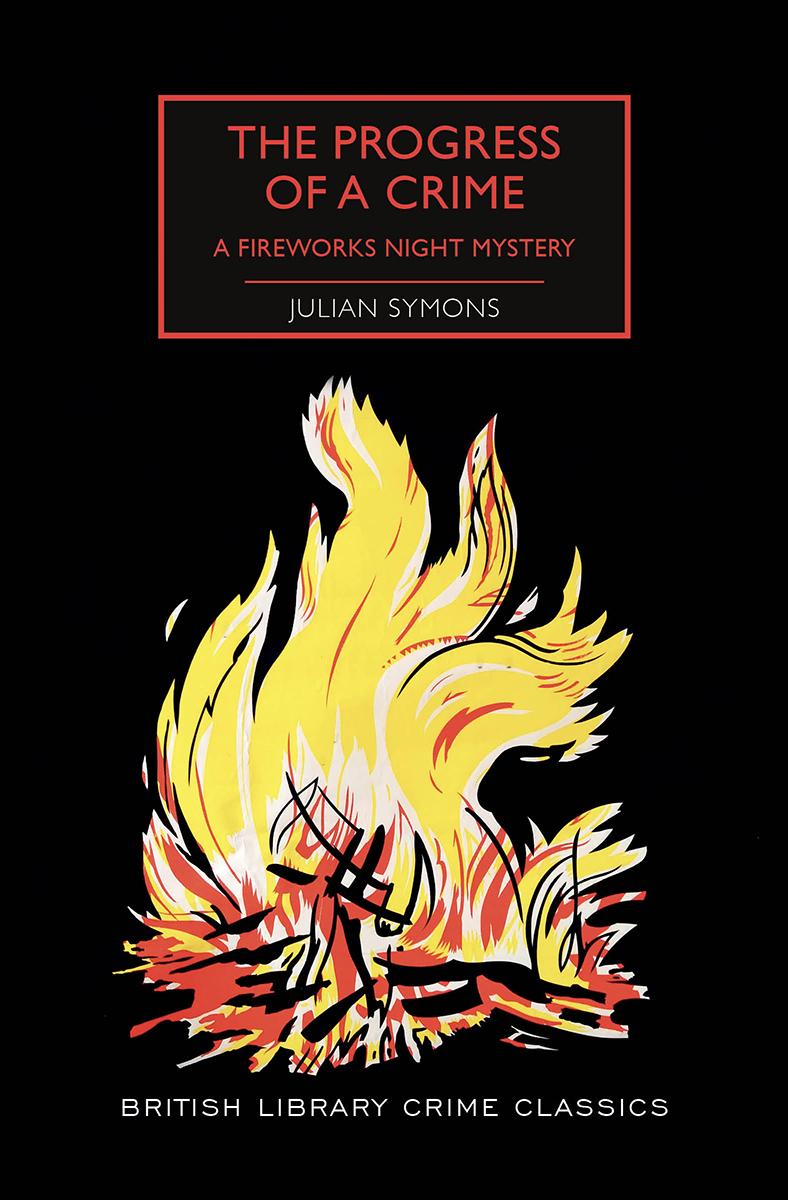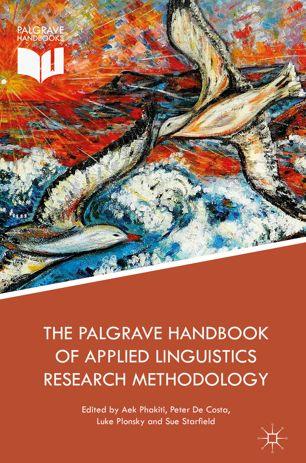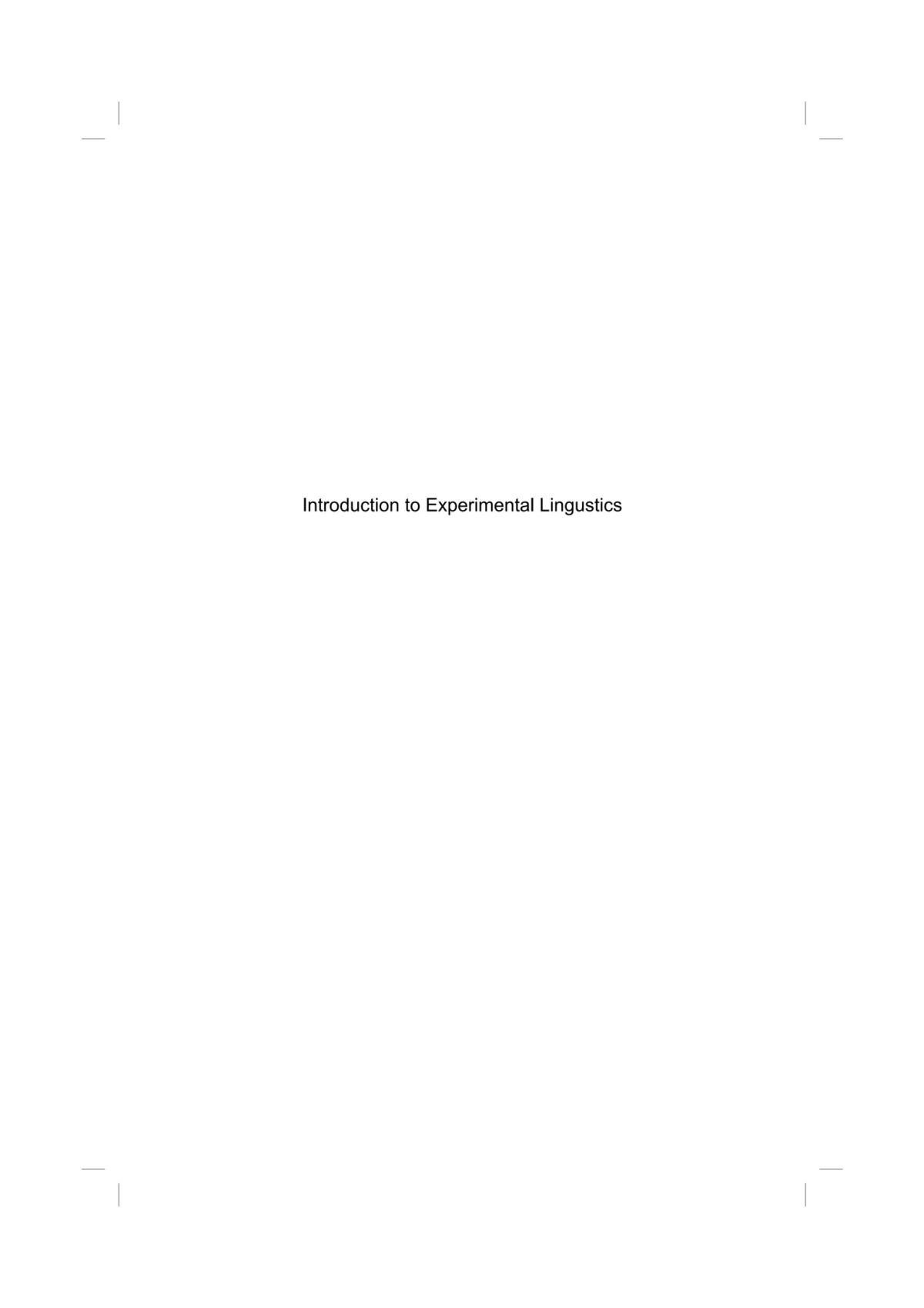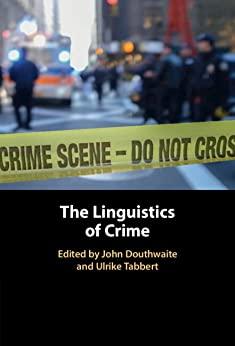TheLinguisticsofCrime
Editedby JohnDouthwaite
UniversitàdegliStudidiGenova
UlrikeTabbert
UniversityofHuddersfield
UniversityPrintingHouse,CambridgeCB28BS,UnitedKingdom OneLibertyPlaza,20thFloor,NewYork,NY10006,USA 477WilliamstownRoad,PortMelbourne,VIC3207,Australia 314–321,3rdFloor,Plot3,SplendorForum,JasolaDistrictCentre, NewDelhi – 110025,India
103PenangRoad,#05–06/07,VisioncrestCommercial,Singapore238467 CambridgeUniversityPressispartoftheUniversityofCambridge. ItfurtherstheUniversity’smissionbydisseminatingknowledgeinthepursuitof education,learning,andresearchatthehighestinternationallevelsofexcellence.
www.cambridge.org
Informationonthistitle: www.cambridge.org/9781108471008
DOI: 10.1017/9781108581332
©CambridgeUniversityPress2022
Thispublicationisincopyright.Subjecttostatutoryexceptionandtotheprovisionsof relevantcollectivelicensingagreements,noreproductionofanypartmaytakeplace withoutthewrittenpermissionofCambridgeUniversityPress. Firstpublished2022
AcataloguerecordforthispublicationisavailablefromtheBritishLibrary. LibraryofCongressCataloging-in-PublicationData Names:Douthwaite,John,editor.|Tabbert,Ulrike,editor. Title:Thelinguisticsofcrime/editedbyJohnDouthwaite,UlrikeTabbert. Description:Cambridge,UK;NewYork:CambridgeUniversityPress,2021.| Includesbibliographicalreferencesandindex.
Identifiers:LCCN2021040761(print)|LCCN2021040762(ebook)|ISBN 9781108471008(hardback)|ISBN9781108456951(paperback)|ISBN 9781108581332(epub)
Subjects:LCSH:Crimeinmassmedia|Crimeinliterature.|Languageandculture.| Massmediaandlanguage.|BISAC:LANGUAGEARTS&DISCIPLINES/ Linguistics/General|LCGFT:Essays.
Classification:LCCP96.C74L572021(print)|LCCP96.C74(ebook)| DDC364.01/4–dc23/eng/20211120
LCrecordavailableat https://lccn.loc.gov/2021040761 LCebookrecordavailableat https://lccn.loc.gov/2021040762 ISBN978-1-108-47100-8Hardback
CambridgeUniversityPresshasnoresponsibilityforthepersistenceoraccuracy ofURLsforexternalorthird-partyinternetwebsitesreferredtointhispublication anddoesnotguaranteethatanycontentonsuchwebsitesis,orwillremain, accurateorappropriate.
ListofFigures page vii
ListofTables viii
ListofContributors ix
1EditorialIntroduction 1 johndouthwaiteandulriketabbert
2TheMetaphoricandMetonymicConceptualisationoftheOther 16 zolta ´ nko ¨ vecsesandjohndouthwaite
3PrisonMetaphors:ConveyingtheExperienceofCon finement 39 monikafludernik
4IdeologyinMainstreamCrimeFiction 57 johndouthwaite
5ACriticalandStylisticAnalysisoftheDepictionoftheTransnational HumanTraffickingVictiminMinetteWalters’ TheCellar 88 christianagregoriou
6TheLinguisticConstructionofPoliticalCrimesinKurdish-Iraqi SherkoBekas’ Poem TheSmallMirrors 105 mahmoodkadiribrahimandulriketabbert
7StylisticAspectsofDetectiveFictioninTranslation:TheCase of ‘TheMurdersintheRueMorgue’ inSlovenian 121 simonzupan
8TransnationalAdaptationsofSherlockHolmes: ARelevance-TheoreticDiscussion 150 annefurlong
9TheEthicalEffectsofVoice-OverNarrationonaVictimTestimonial: AText-WorldAnalysisof ‘TheBedIntruder’ Meme 174 m’baliathomas v
10RealisingBetrayal:AMultimodalStylisticAnalysisofaScene fromtheTVSeries TheSopranos 194 simonstatham
11 ‘NossaVidaéBandida’:ReadingRioProhibitedFunkfrom aCDAPerspective
andreamayr
12DeviantMindStyleofaSchizophrenicOffender
ulriketabbert
13NarrowerorBroaderGround?TheRoleandFunctionof MetaphorsinLegalDiscourse
douglasmarkpontonandmarcocanepa
14CondemningtheCondemners:ThePortrayalofRegulatorsin UKNewsaboutCorporateCrime
ilsea.ras
15IdeologyinCriticalCrimeFiction
johndouthwaite
Thefullversionofthischaptercanbeaccessedonlineat www.cambridge.org/ LinguisticsOfCrime
2.1Animage-schematicstructureforthe HeartofDarknesspage 26
3.1Sourcetermsfordescribingprisons(prisonisx metaphors) 41
9.1Text-worldarchitectureof ‘TheBedIntruder’ 185
14.1CollocationofFSAand ‘failed’ 321
6.1ThetoolsofCriticalStylisticsandtheirconceptual categories page 110
12.1Calculatingstatisticalsignifi cancefor first-person-singular pronounuseinJDCcomparedwithLIWC2015
13.1Thenarrowgroundversusthebroadground
14.1Overviewofarticlesandwordspernewspaperincorporate fraudcorpus
14.2Toptwenty-fi vecollocatesofregulator|regulators,sorted byfrequency
14.3Top fiven-gramsfor financial,authority,services,commission, securities,exchangeandconduct 308
14.4Toptwenty-fi vecollocatesforFSAandSecurities#Exchange Commission,sortedbyfrequency 309
14.5Toptwenty-fi vecollocatingverbstoregulator|regulators 318
14.6Aggressive,fail*, flexing,overzealous,teeth,toothless andtoughascollocatestoregulator|regulators
319
14.7Aggressive,fail*, flexing,overzealous,teeth,toothlessand toughascollocatestoSecurities#ExchangeCommission 322
Contributors
marcocanepa isanItalianjudge.FromJuly2018tothepresent,hehasbeen presidentofthepenalsectionoftheCourtofJusticeinSavona.Beforethen, heworkedasajudgeinSicily(1999–2006),apublicprosecutorinSardinia (1996–1999)andalawyer(1992).Hewritespapersandparticipatesinlegal conferences,givingtalksaboutcomparativelaw.InJune2016,he shadowedajudgeattheEnglishCrownCourt.
johndouthwaite hasalong-standingcareerasProfessorofEnglish LanguageandtaughtatseveraluniversitiesincludingUdine,Turin, CagliariandatScuoladiApplicazione(theItalianArmyOfficerTraining School)inTurin.HewasProfessorofEnglishLanguage,HeadofEnglish LanguageattheDepartmentofForeignLanguagesandHeadof PostgraduateTeacherTrainingCourseinForeignLanguages,Literatures andCulturesattheUniversityofGenoa,Italy.
monikafludernik isProfessorEnglishLiteratureattheUniversityof Freiburg/Germany.Sheisanarratologistbytrainingbuthasalsoworked inpostcolonialstudies,aestheticsandLawandLiterature.Hermostrecent bookwaspublishedbyOxfordUniversityPressin2019(Metaphorsof Confinement).Sheiscurrentlydirectingaso-calledKoselleckproject (aspecifi ctypeofprojectfundedbytheGermanResearchFoundation)on diachronicnarratology.
annefurlong isAssociateProfessorintheEnglishDepartmentatthe UniversityofPrinceEdwardIsland.Hercurrentresearchextendstheapplicationofrelevancetheorytoadaptationstudies.
christianagregoriou isanAssociateProfessorinEnglishLanguageatthe UniversityofLeeds,specialisinginthestylisticsofcrimewriting.Most notableareherthreemonographs: CrimeFictionMigration:Crossing Languages,Cultures,Media (2017); Language,IdeologyandIdentityin SerialKillerNarratives (2011);and DevianceinContemporaryCrime Fiction (2007).Hereditedcollectionsinclude Representationsof TransnationalHumanTrafficking:Present-DayNewsMedia,TrueCrime ix
andFiction (2018)and ConstructingCrime:DiscourseandCultural RepresentationsofCrimeand ‘Deviance’ (2012).
mahmoodkadiribrahim (knownasMahmoodBaban)holdsaPhDin LinguisticsfromtheUniversityofHudders field.Hisresearchinterestisin the fi eldof(Critical)StylisticsinEnglish,KurdishandArabic,bothliterary andnon-literarytexts.HeisalectureratImamJa’afarAlSadiqUniversity/ KirkukCollegeofArts,EnglishDepartment.In2010–2011,hewasa linguistwithGlobalLinguisticSolutionsinIraq.Hewasformerlyan externallectureratKirkukUniversity(2011–2014)andaninstructoratthe UniversityofHumanDevelopmentintheKurdistanregionofIraqinthe sameperiod.InJuly2014,hejoinedtheUniversityofHuddersfi eldand workedasastudentambassador(2015–2016).In2017,heworkedasa lecturer(informant)in fieldlinguisticsatthesameuniversity.In2018,he wasalectureratTheIslamicUniversity/Al-NajafAl-Ashraf/Iraq.During theCovid-19pandemic,healsostartedtoteachphoneticsatTishq InternationalUniversity.
zolta ´ nko ¨ vecses isProfessorEmeritusatEötvösLorándUniversity, Budapest.Hismainresearchinterestsincludemetaphortheory,the cognition-cultureinterfaceandthelanguageofemotions.
andreamayr isLecturerinMediaandCommunicationatZayedUniversity, UAE,wheresheteachesandresearchesintheareaofCriticalDiscourse Analysisandthesemioticsofprint,broadcastandnewmediawitha particularfocusoncrimeanddevianceandsocialmediaactivism.
douglasmarkponton isAssociateProfessorofEnglishLanguageand TranslationattheDepartmentofPoliticalandSocialSciences,University ofCatania.Hisresearchinterestsincludepoliticaldiscourseanalysis, ecolinguistics,sociolinguistics,appliedlinguistics,pragmaticsandcritical discoursestudies.Hehasdealtwithavarietyofsocialtopics,including ecology,localdialectandfolktraditions.Hismostrecentbook UnderstandingPoliticalPersuasion:LinguisticandRhetoricalAspects, waspublishedbyVernonPressin2019.
ilsea.ras isaTutorinCriminologyatLeidenUniversity,theNetherlands. ShecompletedherPhDinEnglishLanguageattheUniversityofLeeds.Her researchandteachingoftencrosstheboundariesbetweenEnglishLanguage andCriminology.
simonstatham isLecturerinEnglishLanguageintheSchoolofArts, EnglishandLanguagesatQueen’sUniversityBelfast,whereheteaches
andresearchesinStylistics,CriticalDiscourseAnalysis,andLanguageand theLaw.HismostrecentStylisticsresearchisintheareaofcrime fictionadaptation.
ulriketabbert isaSeniorPublicProsecutor(Oberamtsanwältin)ata GermanprosecutionofficeandaVisitingResearchFellowatthe UniversityofHudders field,UK.SheholdsaPhDinlinguisticsfrom Hudders fieldandresearchestheconstructionofcrime,criminalsandvictims acrossavarietyoftexttypes.
m’baliathomas isAssistantProfessorattheUniversityofKansas,USA.She isaCriticalAppliedLinguistandTESOLteachereducatorandwritesonthe everydaycreativityofnon-nativeandnon-standardvarietiesofAmerican English.Amongherpublicationsare RenderingtheUntellable,Tellable: TheCooperativeWorkofNegotiatingTransgressiveTalk (2020)and The ProblematizationofRacial/EthnicMinorityStudentParticipationinUS StudyAbroad (2013).
simonzupan isAssistantProfessorattheDepartmentofTranslationStudies, UniversityofMaribor,Slovenia,andholdsaPhDinliterarytranslation.He hastaughtcoursesinliterarytranslation,stylistics,conferenceinterpreting, Americanliteratureandstyleintranslation.Inrecentyears,hismain researchinterestshaveincludedliterarytranslation,stylisticsandconference interpreting.Heisanactivetranslatorandconferenceinterpreter.
1EditorialIntroduction
JohnDouthwaiteandUlrikeTabbert
1.1Crime,SocialStructure,ValuesandtheLinguisticApproach Crimeisanimportantsocietalphenomenon.Itaccountsforasigni ficant proportionofacountry’sgrossdomesticproduct,itrepresentsaseriousthreat tonormalexistenceinmanycountries(Ras, Chapter14),anditcanattimes constituteachallengetothelegitimacyoftheextantorder(Mayr, Chapter11). Nevertheless,crimeholdsanenduringfascinationforthegeneralpublic,asis shownbytheenormoussales figuresforcrime fiction(underscoredbythevast amountoftranslationoccurringinwhathasbeenaglobalmarketforsome timenow),andthehugeamountoftimedevotedtocrime fi ctionontelevision andinthecinema.
Muchofthisfascinationstemsfromthefactthatfewpeoplewitnessorfall victimtocrime firsthand.Despitedirectencounterswithcriminalactivity beingrare,peoplemanifeststrongfeelingsaboutcriminalsandpunishment. Twocogentreasonsaccountforthisphenomenon:(1)crimetriggersreactions determinedbypeople’sdeeplyinstilledvaluesand(2)people’sconstant ‘indirect ’ experienceofcrimecanaffecttheirlivesquiteradically,inatleast twoways.
Ontheonehand,problemsexistwhichtouchtheireverydaylives(aswellas triggeringtheirvaluesandconsequentreactions):organisedcrime,drugs(of especialconcerntoparentswithyoungchildrenandofindirectconcerntoall causedbyinternationaldrugtraf ficking),crimesofviolenceincertainareas, violentcrimesagainstwomeneverywhere,1 corruption,effectsofimmigration,
1 Currently,awomaniskilledeverythreedaysinItaly,principallybyherspouseorlover.In Germany254womenweremurderedin2019.Theproblemisevenmoreseriousinthose countrieswherethefemaleislegallyand/orculturallysubordinatedtothemale.Thatthisis ultimatelyapoliticalproblemworldwideisindicatedbytheculturallyredolentdiplomatic incidentwhichtookplaceatanofficialinternationalmeetingon7April2021:Ursulavonder Leyen,PresidentoftheEuropeanCommission,wasleftwithoutachairbyTurkishPresident RecepErdoğan.PerhapsevenmoresignificantwasthefactthatCharlesMichel,Presidentofthe EuropeanCouncil,madenomovetorectifythesituationandofferednoapologytovonder Leyenfollowingthemeeting.
terrorism,war,stateterrorism(Johnson 2019),allinfluencetheday-to-day runningofsingleindividuals’ livesandtheglobalregulationoftheirlives. Consequencesincludehighertaxation,greaterstatecontrolovercivilliberties, effectsoninternationalpolitics.Toillustratethelatter,oilintheMiddleEast hasproducedamixofwar,terrorismandglobalpoliticswhichhaveworsened thesituation,SaddamHussein’ssupposedstoreofchemicalweaponsconstitutingacogentexemplification.ThecurrentRussia-Ukrainewarhasdetonated anotherworldcrisis.Itisnocoincidencethat Chapter6 byIbrahimand TabbertdealswithKurdistan.Indeed,overhalfofthechaptersinthisvolume illustratehowdailylivesareaffectedbycrime:4–6,9,11,12,14and15.
Ontheotherhand,peopleexperiencecrimefromtextsaboutcriminality, wherebyweunderstandtheterm ‘text’ initswidestsense,including,among others,newspaperandtelevisionreportsaswellascrime fictionnovels, fi lm, poetry,offenders’ accountsoftheirownwrongdoings,legaldocuments,governmentandresearchinstitutestudiesandreportsoncrimeandprisons.This pointalonejusti fiesextendedresearchoncrimeinthemedia.
Thekeytounderstandingthisenduringfascinationthatthephenomenonof crimeholdsthereforeliesnotonlyinstudyingrealcrimeandcriminals(asis thesubjectofcriminology,sociologyandeconomics)orintheirdetectionand punishment(asfallswithintherealmofpolicingandthelaw),butprincipally inthestudyoftheplethoraoftextsproducedaboutcrime,criminalsandtheir punishmentsincethisiswheremostpeopleunwittinglyacquiretheirknowledgeaboutcrime(Colbran 2014b),aswellasgainenjoymenttherefrom, anotherstrikingphenomenonrequiringexplanation.
Leavingcrimeactuallyoccurringintherealworldtobedealtwithby legal,criminologicalandgovernmentalagencies,thereexistsanimmense parallelworldofdiscourseoncrimethatweexploreinthisvolumebecause thisdiscourseconstitutesapowerfulcomponentindetermininghuman perceptionofthephenomenonitself(Colbran 2014a )and,consequently, subsequentbehaviourconcerningthatphenomenon(suchasone ’ sattitude topunishment).
Crimeisnotaninbuilt,immanent, ‘natural’ phenomenon,butissocially defi ned.Thus,definitionsofcrimechangeasplace,historicalconditionsand socialstructurechange.Crimeisthusawindowontheworld;itrefl ectsthe socioeconomicstructureofsociety,itsvalues,itsattitudesandthesocial confl ictsandsocialdysfunctionscharacterisinganygivensocietyatagiven time.Crime fictionisaprivilegedsiteinwhichsocietycanbeobservedand analysed.Onemightobjectthatcrime fictionbeing fictitious,itcannotclaimto constitute ‘social’ documentation.Thisisfarfrombeingthecasesincenovels aretakenfromlifeandreflectlifeinsomeway.Onecrucialwayinwhichthey mirror,andsoreveal,lifeisthattextspresentworldviewsvyingwitheach othertopromoteandbuttressthevaluesystemstheychampion:theyaresites
ofstruggle.2 Ourfundamentalaimistoshowhowcrimeandthereactionto crimeareportrayedinitsvariousmanifestationsacrossindividualtexts,text typesandgenres,acrossculturesanddifferentlegalsystems.Anobligatory concomitantgoalis,consequently,aninvestigationintohowsuchportrayals affectorareintendedtoinfluencereaders ’/viewers’ responsesandhowthey reacttotheattemptsmadebytextstopositionthem.
Sincetextsareconveyedbasicallythroughlanguage,ouraimistoshowby meansofavarietyoflinguisticmethodologieshowsuasionactuallyworksin thosetexts.Anotherfundamentalreasonwhylinguisticsisouressential analyticaltoolisbecauselanguage,orrather,anysemioticsystem,isnota neutraldevicewhichobjectivelydescribes ‘theworldoutthere’,butonethat hasinbuiltvalues,onethatcreatesatextworldwhichnecessarilyconveysa worldview – asstatedabove,textsaresitesofstruggleinthebattlefor hegemony(Fairclough 1989).Thisisdemonstratedeitherdirectlyorindirectly inallofthechaptersinthisvolume.
Exploringthetextuallyconstructedworldviewaccordinglyentailsdealing withideologicalmeaninginthesetexts,themajorconcernunderlyingthe contentsofthisvolume.Ideologiesas ‘acoherentandrelativelystablesetof beliefsandvalues’ (Wodak&Meyer2009,p.8)canbeunderstoodasvalues attachedtothetextworlds(Jeffries2000,p.384)withlanguagebeing ‘the primaryinstrumentthroughwhichideologyistransmitted,enactedandreproduced’ (Teo2000,p.11).Thisideologicalapproachunderlinesthesocial, historicalandcriticalaspectsoftherelationshipbetweencrime,socioeconomic structuresandpowerrelationsinsocietywhichthepresentvolumesetsout toexamine.
Thisvolumeillustratestheapplicationoflinguisticanalysistoarangeof crime-relatedtexttypes,alwayspositioningthetextitselfcentrestage.Suchan approachisextremelyrareincrimestudies.Linguisticsallowshypothesising falsi fiableassertionsconcerningwhattakesplaceinthosetextslinguistically and,consequentlyandprimarily,abouthowthecrimediscourseworldunder scrutinyisconstructedthroughlanguage,aswellasabouthowthemodeof linguisticconstructionaffectsthereader.Althoughtextsarecreatedthrough language,asinanyformofcommunicationandcomprehension,theynecessarilydeployourknowledgeoftheworld.3 Hence,inadditiontounderstandinghowlanguageworksincrimetexts,comprehendingthosetexts concurrentlyrequiresthedeploymentofallourbranchesofknowledge. Somedisciplinessuchasliterarycriticismarecloselyrelatedtolinguistics, whileotherssuchasmusic,forensicpsychology,criminologyorthelawmight at firstappeartobeextraneoustolinguistics.Asthevariouschaptersinthe
2 Chapters3–5 and 15 focusonthisaspect.
3 Chapter15 illustratesthisperfectly.
presentvolumewillstrivetoshow,allknowledgeisinterconnected.This accountsforourattempttoexplorenewroutesofstudyingthesocietal phenomenonofcrime,includingthefascinationitholds.Suchfascination, wewilltrytodemonstrate,isaproductoftheideologicalfunctionsofcrime fiction,thereversesideofthecoinbeingthepsychologicalneedssuch fi ction satisfi esinthereader/viewer,thetwofunctionsbeinginextricablyintertwined. Althoughtheapproachismultidisciplinary,themethodologicalstartingpoint foreachchapter,however,isalwaysalinguisticone.
Amongthevariouslinguisticapproachesdeployedinthisbook,stylistics prevails.Stylisticsunderstandsitselfasa ‘systematicanalysisofstylein language’ (Jeffries&McIntyre2010,p.1).Byitsverynature,stylistics embracesalldomainsofknowledgeanddeploysanextremelybroadrange ofmethodologicaltools.Aboveall,itscrucialgoalisnotonlythatofidentifyingwhatatextmeans,but,evenmorevital,howatextmeanswhatitmeans, sinceattributinganeffecttoalinguisticconstructioniswhatmakesstylistic hypothesesfalsi fiable.
Whilesomecriticsarguethatstylisticsisasub-disciplineoflinguistics, othersclaimthatstylisticsismuchbroaderthanlinguistics,sinceitdrawson otherlinguisticmethodologiesaswellassubjectswhicharenotspecifi cally linguistic,suchassociology,psychology,anthropologyandliterature.Though stylisticsbeganlifeinvestigatingthelanguageofliterature,seenasa ‘special’ typeofsub-language,stylisticiansnowanalyseanyformofcommunication, linguisticandnon-,inallandeverydomain.Thelong-standingdebateon whetherlanguageisageneralphenomenonwithgeneralrules,orwhether literature,economics,law,religionandsoforthare ‘special’ languages,each withtheirowncharacteristicsub-rules,continuesheatedly.
Thepresentvolumeconstitutesacogentillustrationofthebreadthof approachesstylisticsemploys.Thus,fromthe ‘traditional’ stylistictoolkit employedin Chapters4–6 byDouthwaite,GregoriouandIbrahim/Tabbert, andappliedtotranslationstudiesbyZupanin Chapter7,wemovetoCritical DiscourseAnalysisascoveredbyRasin Chapter14,RelevanceTheoryas dealtwithbyFurlongin Chapter8,TextWorldTheoryusedbyThomasin Chapter9 andMultimodalAnalysisdeployedbyStathamin Chapter10 Recenttimeshavewitnessedthe ‘cognitiveturn’ (Statham&Montoro 2019) inlinguisticstudies,whichweendorsebyopeningthisvolumewithan overarchingcognitivemetaphoricalapproachtotheconstructionofthe(deviant)Other(Chapter2 byKövecsesandDouthwaite)andaninvestigationinto metaphorsusedforprisonsandprison-likeeverydaysituations(Chapter3 by Fludernik).Mayr(Chapter11),employstheAppraisalframeworktoexplore favelafunklyrics.
Inordertoshedfulllightontothecomplexityofthecrimeanditstextual representation,thepresentvolumeembracesthe fieldsofcriminologyand
sociology(Douthwaitein Chapters2, 4 and 15),forensicpsychologyand criminology(Tabbertin Chapter12),lawandrhetoric(PontonandCanepa in Chapter13),therebyensuringawide-ranginginterdisciplinaryapproachis broughttobearonourtopic.Interdisciplinarityoverridestheconfi nesofthe professionsaswellasthoseofknowledgedomainsinordertoachievedepth andbreadthsoastoavoid,asfaraspossible,thelimitationsbroughtaboutby theblinkersofone’sownandsometimessmallareaofexpertise.Having forewarnedthereaders,itwillcomeasnosurprisetothemtolearnthat Canepaisajudge,Tabbertisapublicprosecutor,Rasisacriminologistand Douthwaiteacriminologistbytraining.
Recentdevelopmentsinlinguisticstudiesofcrime fi ctionhavewitnesseda significantbroadeningoftherealmsofinvestigation,includingexplorationsof theculturalandsocialcriticisminherentinimportantsectorsofcrime fiction novels, filmsandtelevisionseries.ThevolumebyStougaard-Nielsen(2017) demonstratesthatagreatdealofrecentScandinaviancrime-relatedtextsdeal withsocialconcernsoverglobalisation,increasingpoverty,concentrationof power,andthecrisisofthewelfarestate,issueswhichcauseworldwidealarm, asourvolumewillbearout.Manyofthearticlesinanothercollectionentitled CrimeFictionasWorldLiterature (Nilssonetal.,2017)showthesametrend atworkfromMexicotoThailand.Weareinaccordancewiththeseapproaches andpayattentiontothesocialcriticismthatisinherentindiscourseoncrime (e.g.,in Chapters4–6, 9, 11, 14 and 15).
1.2AnOverviewoftheVolume
Thelexemes ‘crime’ and ‘criminal ’ oftheiressencesuggestdifference.Hence KövecsesandDouthwaiteopenthevolumewithacognitivelinguisticinvestigationoftheconceptofOtherness.Startingfromtheobjectivefactthatpeople belongtodifferentsocialandculturalgroups,Kövecsesnotesthathuman beingsdistinguishpeople ‘whobelongtoourgroupfrompeoplewhodonotin arigidway’.Thisresultsinclassifyingpeopleaseitherbelongingornot belongingtoagivencategory.Kövecseshypothesisesthatthis ‘container’ logicofcategorisationisapropertyofthehumancognitiveapparatus. Categorisationisaprocessofinclusion/exclusion.Weincludeorexclude peoplefromagivencategoryonthebasisofwhetherornottheypossess certaindefi ningfeaturesdeemedessential.WetherebycreatetheOtheronthe basisofdifference,oftenstigmatisingsuchdifference.4 Wethenmetonymicallytakeatypicalrepresentativeofthatcategoryasstandingfortheentire category,despitethevariationswithinacategory.Inthis,thecognitiveprocess
4 Stigmatisationisgenerallyrelatedtodominanceandexploitation,andistreatedinseveral chaptersinthisvolume:4– 6,11–13.
ofmetonymicthinkingbolstersdichotomiccategorisationandstigmatisation. Kövecsesthenidenti fiesanumberofcognitiveorconceptualmetaphorswhich typifyOtherness,suchas
theotherisanenemy
theotherisaprimitiveman/barbarian/wildanimal
Onecrucialfunctionofcognitivemetaphorsisthattheyperformideological functions(Kövecses 2010).Theydosobyhighlightingcertainfeaturesand hidingothers.Signifi cantly,asKövecsespointsout,thecognitivemetaphors employedto ‘refer’ toOthersgenerallyunderscoretheirsupposednegative qualities,asinthepreviousexample: theotherisawildanimal.Hethen proceedstoapplyhistheoreticalconstructstotextstodemonstratethevalidity ofhisargumentation.
Douthwaitecontinuesthechapterbyillustratinghowtheconceptsworkina signi ficantcrimetextwhereOthernessisthekeyvariable,thematerialand ideologicalcentrearoundwhichallthecharactersandeventsrevolve.
Theenormousimportanceofmetaphorincommunication(Douthwaite 2011;Kövecses 2010)iswitnessedbythefactthatthetopicistakenup directly(i.e.as the objectofinvestigation)byFludernik(Chapter3)and Ponton/Canepa(Chapter13),andindirectly(i.e.asoneoftheanalyticaltools deployed)byDouthwaite(Chapters4 and 15),Gregoriou(Chapter5), Ibrahim/Tabbert(Chapter6),Zupan(Chapter7),Mayr(Chapter11),Tabbert (Chapter12)andRas(Chapter14).5
In Chapter3,Fludernikgoesdirectlytothekeyfeatureofmetaphorin communication:metaphorsexpresspointofview,theyhaveanideological function.Shedemonstratesthisquiteneatlybypointingoutthatinthese coronavirus-riddendays,outofthemanifoldpossiblewaysofdefiningclinics, itissignifi cantthattheyhaveoftenbeenlabelledas ‘prisons’,ratherthan life-savinginstitutions,giventhehighlycurtailedlibertiesreigninginthose establishments.Fludernikillustrateshowmetaphorswork(ideologically)by examiningcarceralmetaphors,thustacklingakeycomponentincrime –punishment – atopicwhichisheavilyvalue-ladenandconsequentlyridden withconflict.ShetakesupFoucault’sviewthatprisonsareheterotopias, parallelworlds,avariantofthebinarydichotomytraditionallyassociatedwith prisons(prisonishellconstitutingtheimplicitoppositeoftheheavenofthe outsideworld).BasedonherpreviousstudyonEnglishMiddleAgesto
5 Givenitstheoreticalandpracticalimportance,aswitnessedbythenumberofcontributionsin thisvolumedealingwiththetopic,Othernessmightbesaidtobeoneofthemain,albeitindirect, topicsofthevolume.Kim(2010)haseditedavolumeofessaysdevotedtoOthernessincrime fiction.Whatdistinguishesourvolumeisthelinguisticapproachemployedandtheconcurrent concentrationontopicssuchasideology,pointofviewandsuasion.
contemporaryAnglophoneliteratureandonessaysfromnewspapersfromthe last150years,FludernikcarriesoutasearchintheLION(LiteratureOnline) databaseforoccurrencesofkeywordssuchas ‘prison’ , ‘fetter’ , ‘shackle’ , ‘manacles’ , ‘chains’ which ‘directlyormetonymicallyinvoketheprison scenario’.Themetaphoricalexpressionsobtainedarethenanalysedanda complexclassifi catorysystemdevelopedinordertoidentifysocialgroups (suchas(1)conservativeswhoviewincarcerationasretributionand(2) prisonersexpressingtheirownviewpointsonthesubject)inordertoidentify thepreciseworldviewsandideologiesthemetaphoricalsystemsimplicitlyor explicitlypropound,therebylinkingideologytosocialidentityand historicalsituation.
Douthwaite’sfocalconcernin Chapters4 and 15 isalsowiththecentral topicofideology.Hisunderlyingaimis todemonstratethat,likealltexts, crime fi ctiontextsaresitesofstruggle.Ideologyandsuasionarethushistwo overarchingthemes.Hedividescrimetextsintotwomainideologicalcamps, conservativeandcritical.Heidenti fi esthemanifoldlinguisticfeaturesthat areconstitutiveofeachcamp,show inghowtheyareoftendiametrically opposed,re fl ectingtheirideologicalopposition.Douthwaitealsopinpoints thelinguistictechniquesdeployedinthetextsinordertopositionreaders, demonstratingthatsuchtechniquesarecommontobothcamps,sincesuasion isageneralcategorywhichisnotdirectlydependentonspeci fi ccontent.He achieveshisgoalsbyexaminingarepresentativeforeachcamp: Midsomer Murders ,intheformofoneofCarolineGraham ’ snovels, WritteninBlood ( Chapter4 ),toillustratethepositionoftheconservativecamp,andthe InspectorGeorgeGently televisionseries(basedonAlanHunter’seponymousnovels,which,however,viemoretowardstheconservativecamp),asa wholetoelucidatethecriticalposition( Chapter15).Othernovelistsand televisionseriesarereferredtowhenrelevanttoexpandingtheargument. Apanoramaisofferedoftheworksproducedinboththe Midsomer works (Graham’ snovelsandtheTVseriesbasedonthosenovels)andthe Gently artefactsinordertoestablishageneralhistoricalandcontextualframework aswellasfurnishingproductiondetailsfortheproductsanalysedrelevantto identifyingandaccountingfortheirstancesandtheirdifferences.Thisis followedbydetailedclosereadings ofselectedexcerptstoexplicatethe previouslyidenti fi edtechnicalandlinguisticdifferencesinoperationandto exemplifythesuasivemechanismsatwork.Themethodologyisstylistic, employingallthetoolsprovidedbythatapproach.Otherscienti fi cdomains suchascriminologyarecalledonwherenecessary.Thetwochaptersarethus complementaryandmeanttobereadtogether.Giventhelimitationsofspace andinordertoofferaswideathematicandmethodologicalpanoramaas possible,thechapteron Gently isprovidedonline,whichalsoaccountsforits non-standardlength.
Gregoriou(Chapter5)analysesanovelabouthuman(child)trafficking,an importantcrimeinvolvingglobalfactorssuchaspoverty,immigration,culture confl ictandracism.AyoungAfricancalledMunagirliskidnappedbyan AfricanfamilylivinginLondonandkeptinacellarasadomesticandsexual slave.Sheisregularlybeatenandtortured,notsimplyasameansofsubjugation,butalsoasawhippinghorseforfamilymemberstoworkofftheir frustrationsandjealousies.Fouraspectsareofespecialimportancetothe cohesionofthisvolume.First,Gregoriouoffersastylisticanalysisofthe novel,employingspeechpresentation,namingstrategies,metaphor,transitivityand(deontic)modalityasheranalyticaltools.Thisenableshernotsimply toidentifywhosepointofviewisbeingpropoundedatvariouspointsinthe text,butalso,andcrucially,tomakethereaderexperiencetheevents,thoughts andfeelingsofthecharacters,therebypositioningthereader.Inaddition, Gregoriouindicatesthecommunicativeeffectsachievedbythelinguistictools sheidentifiesashavingbeendeployedbythewriter,makingtheresults obtainedreliablesincefalsifi able.Second,asocialcritiqueisofferedbythe chapter.Immigrationisatopicofgreatrelevancesinceinrecentdecadesithas becomeasigni ficantsocialphenomenon,notonlybecauseofthenumerous warscreatingrefugees,butalsobecauseitisarichsourceoforganised criminalexploitation.Thenovelalsodealswithpossibledireconsequences ofslavery,includingthedestructionofpersonality,withtheextremeresult,in thisparticularcase,thatintheendthevictimbecomesthepersecutorwreaking terriblevengeanceonherformeroppressors,aphenomenonwhichisnotnew inhumanhistory.Third,Gregorioupointsoutthatthenoveldealswith AfricansexploitingAfricans,totallyignoringthecrucialroleplayedbywhites intraffi cking.Finally,theideologyofthesocialgroupsinvolvedishighlighted,relatingeachideologytoitscultureoforigin.
Chapter6 (Ibrahim/Tabbert)continuesonthetopicofvictimsofcrime introducedbyGregoriouandcrossesculturalbordersintoIraqiKurdistanwith anexplorationofIraqiKurdishpoetSherkoBekasandhiscollectionofpoems knownunderthetitle TheSmallMirrors.Theselectedpassageunderscrutiny hasatitscorethe(Kurdish)victimsofgenocidebutdeliberatelyavoids namingexplicitlythoseresponsiblefortheatrocities.Oneeffectofthis strategyistobestowupontheexperienceglobalsignificance,cruciallyso, sincegenocideandother ‘political’ crimesaregivenscanttreatment,whennot neglectedcompletely,incrime fiction.Byaddressingthisissuetheydraw attentiontothesociopoliticalsituationworldwideandseethisgenocideina rowwithfascism,theBalkanwars,theRwandangenocideandmanymore.In thepassageunderscrutinyonehighlysignificantaspectthatreceivescritical attentionisthefactthatthelinguisticconstructionofthevictimsautomatically bringsabouttheconstructionoftherespectiveoffenderseventhoughthelatter arenottalkedabout,againbestowingglobalsignificancetothesingle
instantiation.TheauthorsemploytheframeworkofCriticalStylistics(Jeffries 2010)thatisparticularlysuitedtodetectingideologicalmeaningintextsand employtentextual-conceptualfunctionsoftextswhich,onthelevelofideation asworldcreationintexts,unraveltheworldprojectedbythetextandthe valuesattachedtothisworld,thatis,theideologicalmeaning.Bekas’ political statementandhistirelessworktogiveavoicetotheKurdishpeopleintheir ongoingstruggleagainstoppressionemphasisesthefactthatvictimsofgenocidemightbenumerousandanonymousbuttheirsufferingisastragicasthat ofanindividualvictimofcrimelike(fictive)Munainthepreviouschapter.
Translationmightat firstappearastrangecomponentinabookoncrime. Yet,asZupan(Chapter7)cogentlydemonstrates,translationofEnglishcrime fictionhasplayedafundamentalrolebothinstimulatingthedevelopmentof crime fictionwritinginnon-English-speakingcountriesandinexpandingthe marketforforeignaswellaslocalcrime fictioninthosecountries.More importantlyforthemainconcernsofthepresentvolume,astranslationstudies havedemonstrated,translationraisesissuesregardingtwointerrelatedlevels: (1)thenatureofequivalenceandhowequivalencemaybeachieved,giventhe diversitybetweenlanguages,culturesandliterarysystems,and,indeed,if equivalenceisagoaloftranslation,asclassictheorywoulddemand,and(2) howlinguisticandsocialdifferencesaffecttranslators’ decisionsastothetype oftranslationtobeeffectedandreaderresponsetothetranslationandhowthe latterisaffectedbythereceivingculture.Zupanthusdealswithissuessuchas themarket,theinfluenceexertedbytexts,howsuchinfluenceisconnectedto cultureandthesocialsituationofthetargetaudience/culture,allcorequestions addressedinvariouschaptersinthevolume,andfurtherdevelopedbyFurlong inherdiscussionofadaptationsinthenextchapter.
ZupantacklesthesequestionsbyexaminingSloveniantranslationsofEdgar AllanPoe’sshortstory TheMurdersintheRueMorgue.After firsttracing Poe’sinfluenceonmarketsalesandonthedevelopmentofworldcrime fiction andthenprovidinganoverviewofstylistictheoryontranslatingdetective fiction,ZupanpresentsPoe’sshortstoryanditsSloveniantranslations.There followsthemainpartofthechapter,ameticulousstylisticanalysisofan excerptfromthetargettextandtwoofitsSloveniantranslations.Zupan identi fiesdifferencesbetweensourceandtargettextsandoffersanaccount oftheoriginofthosedifferences.Hethenlinksreaderlyresponsetothe speci ficlinguisticselectionsmadebytheauthor/translator,showing,where relevant,howsuchchoicesarerelatedtothetranslator’sattempttonativisethe textandhowsuchchoicesareembeddedinthetargetculture.
In Chapter8,FurlongmovesonestepfurtherthanZupan.Ifequivalenceis impossible,andif,inaddition,thereareasmanyinterpretationsofatextas therearereadingsofthattext,thenadaptationnecessarilyproducesa ‘new’ text,reflectingtheadaptor’sinterpretation(ornovelcreation)oftheoriginal.
Onereasonaccountingfornoveltyisthat filmandtelevisionadaptations invariablyprovidemuchrichervisualsignalsthantheoriginal(written)text. Adaptationsthusembodytheintentionsoftheadaptorandnotthoseofthe originalauthor.Furlonginvestigatesthenatureofsuchintentionalityby examiningadaptationsintheirhistoricalandculturaltargetsettings,taking crimetextsashersubjectmatter.Duetotheinherentlyideologicalnatureof thegenre,itmaybepredictedtoprovidecopioussignificantmaterial.Furlong selectslatenineteenth-centuryRussianandJapaneseadaptationssinceatthat timethesecountrieswereundergoingprofoundeconomic,socialandpolitical transformations,changeswhichalsoinvolvedtheissueofnationalidentity (suchasareactionagainstBritishimperialistvalues).FurlongoptstoscrutiniseversionsofConanDoyle’sworksbecauseoftherangeandvarietyof adaptationsproduced.Sheexaminesthe1981Russiantelevisionproduction of TheHoundoftheBaskervilles becauseitwastheacmeofbothexoticism (thelifeoftheBritishbourgeoisie)anddomestication(nationalculture). Furthermore,theinvestigationintointentionalityisaidedbydirector,producer andwriterhavingoutlinedtheirgoalsandcommentedonthevalueofthe fi lm. Sincetheadaptedtextsvarylittlefromtheoriginal,analyticalattentionis concentratedontheabundantvisualsignals.Setting,events,people,clothes andobjectsarecarefullyanalysedtoidentifytherelevantculturalbehaviour theyrepresentintheRussiaofthetime.Furlongunderscoresthattheneedto satisfyRussiancensorshipandprotectthevaluesofthestatusquoledtothe lampooningofDoyle’soriginal.However,FurlongdemonstrateshowdomesticationofHolmestorespectthispoliticalrequirementproducedcontradictory effectsinwhichnationalidentitywasbothreinforcedanddestabilised.Furlong extendsheranalysistopresenttimesbyinvestigatingthenatureofBritish Sherlock andAmerican Elementary,comparingthetwoworksandthenscrutinisingtheJapaneseadaptations.Ideology,culture,goalsarecentraltopicsin thischapterastheyareintheentirevolume.
Chapter9 (Thomas)concludesthetriadof Chapters7–9 byaddingthetopic ofparodytothepreviouslyexaminedtopicsoftranslationandadaptation.It developsFurlong’sturntomultimodality.Thomasanalysesan(American) YouTubevideotitled ‘BedIntruder’,reportingonanattemptedrape.The videohasgoneviralandinspiredcountlessparodies.Thomasapproachesthe topicofracewithinUSsocietythatisamostpressingsocietalissuegiventhe socialunrestsfollowingthedeathofGeorgeFloydandmanyother,mainly AfricanAmericansinpolicecustody,inspiringa#BlackLivesMattermovementworldwide.ThomasemploysTextWorldTheory(Gavins 2007;Werth 1999)toanalysethemultimodalvideosequenceandthreeselectedparodies. Thereensuesahighlydetailedaccountwhichtracksprocesses,enactors, speechpresentationmodesinordertoidentifyswitchesintextworldsand thenatureofthetextworldthathasbeenturnedtosoastoidentifythe
functionseachswitchandeachsubsequenttextworldperformandhowthe presentationoftheeventsreportedaffectviewerresponse.Thechapterthus underlinesthe ‘cognitive’ turnwhichthisvolumepaysparticularattentionto fromtheverybeginningin Chapters2 and 3
Statham(Chapter10)offersamethodologicallessoninmultimediaanalysis byexaminingexcerptsfromanepisodeoftheTVseries TheSopranos.The episodeisselectedbecauseitdealswithanimportantandcomplexaspectof humancommunication – deceit – enablinganalyticaldepthtobeachieved. Amafi osobetrayingthebossbybecominganFBIinformantandtryingtoget thebosstoincriminatehimselfisthusarealisticinstantiationofthecommunicativephenomenonunderinvestigation,providingplentiful,non-superficial evidenceofthebehaviourinquestion.Onekeyaspectofmultimodalcommunicationisthewidevarietyofinformationalsources(auralandvisual)constitutingtheoverall ‘signal’.Asthestylisticanalysesprovidedby Chapters4–7 show,textsarehighlycomplicatedartefacts,sinceaplethoraofdifferenttypes ofsignalsinteract,sometimesincontrastingorcontradictoryfashion,tobuilda highlycomplexwhole,evenatthelevelofsentence.Addingthewidevariety ofvisualsignalsthatareconsciouslyorunconsciouslyemployedinmultimodaltextscomplicatesmatters n-fold.Statham firstanalysesthreemini-texts employingGrice’stheoryofimplicaturetobringoutthehidden(deceitful) meaningscreatedverbally(reiteratingitsimportanceasdiscussedby Douthwaitein Chapter4),followedbyanexaminationofvariouscinematic techniquesdeployedtoproducevisualsignalsinordertoshowhowthose visualsignalscorrelatewiththeverbalsignalspreviouslyanalysed.Theresult isarichreadingofthetext,demonstratingwhatviewersaremadetoexperienceandthetechniquesemployedtomakethemexperienceeventsinthe fashiondesiredbythedirector.
Chapter11 (Mayr)bridgesthethematicgapbetween fictionalandreal criminals,theinvestigativedomainof Chapters11–14,asshetakesustothe favelasofRiodeJaneiro,Brazil,andtheglorificationofgangleadersandgang activitiesintheirfunksongs(especiallythesub-genre proibidão).Mayr providesadetailedexaminationofthehistorical,political,socialandcultural contextinordertobringoutthefullsigni ficanceofthecountercultureoffunk inhersubsequentlinguisticanalysisofthelyrics.Heranalyticaltoolkit consistsofCriticalDiscourseAnalysis,SystemicFunctionalGrammarand AppraisalTheory.Shecombinesthisdiscourse-analyticalapproachwith ethnographicalinsightsfromparticipantobservationatfunkeventsand informalinterviewswithfunkinsiders.OneemblematicinstanceisMayr’s elucidationofthesymbolicuseofspace.Infunk,thefavelaisrepresentedas an ‘empire’.Thismetaphoricalrepresentationperformsseveralideological functions.Itclassifi es,henceevaluates,thisspaceas(1)alegitimate,legal institution,(2)apowerfulinstitution(3)consequentlyinhabitedbypowerful
people,hencepeopletoberespected.Identityisthusinvertedfrompowerless anddisreputable(‘demonised’ bytherulingclass,thepoliceandthemedia, precludinganyquestioningoftheharshsocialrealitiesunderlyingthefunk phenomenonandthesocioeconomicstructureproducingsuchpoverty – Rio deJaneirobeingclassi fiedasoneofthemostviolentcitiesintheworld)to powerfuland ‘respectable’.Suchself-esteemisanecessarymentalcomponent ifapersonistoremainpsychologicallystableandfunctional,(4)asymbolof andspurtoresistance,toprotectspaceandidentityfromtheonslaughtof ‘civil society’.Inthissense, empire isconnectedtoanothercentralmetaphorwhose functionsinfunkareidenti fiedbyMayr: war.Gangleadersfurnishunderprivilegedyouthwithopportunitiestoperform(hencetoexpresstheirsenseof honourableidentityandarticulatetheircriticismoftheirmarginalitythrough the ‘poetics’ ofthe ‘antilanguage’ offunk)by financingtheirequipmentand providingprotectedspacefortheirperformances,incontrasttotherepression carriedoutbytheauthorities.Funkthusperformscrucialideologicalfunctions, addressingandrecontextualisingtheimbricationsofstateandcriminalviolenceandexpressing ‘insurgentcitizenship’ .
Chapter12 (Tabbert)followsMayr’sthematicleadandmovesfromthe analysisofagroupphenomenontotheanalysisofasingleindividual,giving voicetooneparticularoffenderandhisownaccountofhis(criminal)action (andthereforehismindstyle).Whatisspecialaboutthisoffenderisthathe suffersfromschizophrenia.Hethereforeperceiveseventstakingplaceinthe realworldsomewhatdifferentlycomparedwiththenotmentallychallenged person.Thischapterbridgesovertoforensicpsychology/psychiatry,providing anin-depthlinguisticanalysisofthelanguagethisoffenderusestodescribehis perceptionsandactions.Althoughhisaccountcomesacrossasbizarreat fi rst glance,recurringlinguisticpatternslinkwithsymptomswhichpeople sufferingfromschizophreniadisplay.Thisstudyrevealstheextremeloneliness andsocialisolation,infacthis ‘otherness’,thisoffenderexperiencesdueto schizophreniaandtheviciouscirclehe findshimselfineverytimehewantsto reachoutforcompanionship,evenleading,unfortunately,toacriminalact. Oneofthemoststrikinglinguisticfeaturesofthisperson’slanguageisthe ‘ideological’ usehemakesofmetaphorswhichhaveastheirsourcedomainthe humanbodyorbodyfeelings,thepsychologicalandcommunicativefunctions ofwhicharetounderlinehisinwardlydirectedfocus.Linguisticanalysisthus helpsidentifyfurthersocialgoalstheycanhelptoprovide:apsychological portraitwhichcouldbeusedtoprovidecareforpersonsinthistype ofsituation.
Chapter13 byPontonandCanepatakesusintoanotherreal-worlddimension:thelegaldomain.Theinterpretationofthelawandhencelanguageitself areatthecoreofeverycourtdecision.PontonandCanepa’ssubjectistherole playedbymetaphorinthelegalsphere.Whilethetwoauthorsconcurthatthe 12 JohnDouthwaiteandUlrikeTabbert
conceptualmetaphorapproachtheorisedbyKövecsesandadoptedbythe majorityofauthorsinthisvolumeplaysafundamentalpartinlegallanguage (bywhichtheymeantextproductionaswellastextualinterpretation),they returntoAristotle ’srhetoricasconstitutingafundamentalanalyticaltoolto investigatetheimportanceofthis figureofspeechasameansofsuasionin winningcasesandasalinguisticallyconstitutivetool ‘throughwhichlawsare madeanddebated,commentedonbylegalspecialists,revised,redrawn’.The ideologicalnatureofbothfunctionsneedsnoclari fication,especiallygiventhe factthatlanguageisnotneutral,astheauthorsconfirminthischapter.
Afterreviewingthetheoreticalissuesinvolvedregardingthenatureand functionsofmetaphor,theyanalysemetaphoruseintheBritishonline CambridgeLawJournal.Thissourcewasselectedbecauseitisfreelyavailableandbecauseitcanalsorepresentinteractivecourtroomdiscourseinasmuchasthearticlessharethesamerhetorical/persuasiveaims.Having identi fiedthosemetaphorswhichperformasuasivefunctionintheselected texts,theyproceedwithaqualitativeanalysisofthosemetaphors,identifying theargumentativestructureimplicitinthedeploymentofthosemetaphors. Theythenprovideanin-depthcasestudy(ofwhatistermed ‘thenarrower ground’),inordertodemonstratehow ‘thedevelopmentofsuchametaphoricalframeisacrucialresourceinthebusinessofnegotiating,andshaping,the lawitself’.Thechapterthushelpsunpacksomeofthecomplexityinvolvedin legallanguage,sheddinglightonhowitisexploitedideologically.
Chapter14 closestheexaminationofreal-worldcrimebydealingwiththe graveissueofcorporatecrime.Rasisinlinewiththecentralsocialconcerns expressedbythepresentvolumeandthemethodologiesdeployed.Thistypeof crimeiscriticalbecauseitrepresentsanimportant figureofthegrossdomestic incomeandbecauseitisthe ‘crimeofthepowerful ’ . 6 One ‘privilege ’ of belongingtothepowerfulishavinggreateraccesstothemedia.Rasreports studiesdemonstratingthatthemediaexertgreatinfl uenceoverpublicopinion, tothepointofaffectingde/legitimisationoflawenforcementagencies.With regardtocorporatecrime,newspaperstendtodenycorporateresponsibility, resortingtotacticssuchasconstruingcorporatemisconductas ‘disasters ’.Ras thustacklestheissueoftherelationshipbetweentaxevaders,taxfraudinvestigators,andtheirrelationshiptothepowerstructureandeconomicstructureof thecountry.
RascarriesoutacorpusanalysisofarticlesinsevenmajorBritishdailieson theUK-basedFinancialServicesAuthority(FSA)andUS-focusedSecurities
6 AlthoughRasstudiesGreatBritain,the financial figuressheprovidesandtheanalysisofthe mediasheoffersareequallyvalidforotherpartsoftheworld,includingItaly,whereDouthwaite lives,andGermany,Tabbert’sabode.AlthoughItaly,forinstance,hasthemafiatodealwith, organisedcrime,includingcorporatecrime,isaworldwidephenomenon.
andExchangeCommission(SEC),twoleadingregulatoryagencieswhich shouldprotecttheinterestsofthenation.Sheexaminesthehistoricalcircumstancesbehindthefoundingoftheagenciesandthemandatesentrustedto them.SheappliesCriticalDiscourseAnalysistothetextsselectedtoekeout thesocialmeaningconveyedbythosetextsandthelinguisticdevicesbywhich thosemessagesareconveyed.Inordertodoso,shealsoappliesfunctional grammar,metaphoranalysisandotherrelevantstylisticstools.Onaglobal levelshe findsthattheagenciesaresubjectedtodelegitimisingmediapressure bylargecompanies,onemajorstrategyadoptedbeingtoneg(oti)atethe legitimacyofcondemningpartiessoastoshiftblametotheseparties. Anotherimportant findingisthatsuchagenciessuccumbtopressures,forboth ‘legitimate’ andillegitimatereasons.Theprintedvolumethusconcludeswith theconcernwithideologyandwherethefoundationsofademocraticsociety arenecessarilytothefore.
Thevolumecontinuesonlinewith Chapter15 byDouthwaite,commented onabove,whichdealswiththetopicofcentralinteresttothisvolume: ideologyincrimetexts.
References
Colbran,M.(2014a). MediaRepresentationsofPoliceandCrime:ShapingthePolice TelevisionDrama.London:Palgrave. (2014b).WatchingtheCops:PolicePerceptionsofMediaRepresentationsofPolice WorkinBritishTelevisionCrimeDrama.InV.Marinescu,S.Branea&B.Mitu, eds., ContemporaryTelevisionSeries:NarrativeStructuresandAudience Perception.NewcastleuponTyne:CambridgeScholarsPublishing,pp.1–15. Douthwaite,J.(2011).ConceptualMetaphorandCommunication:AnAustinianand GriceanAnalysisofBrianClark’s WhoseLifeIsItAnyway?InM.Fludernik,ed., BeyondCognitiveMetaphorTheory:PerspectivesonLiteraryMetaphor.London: Routledge,pp.137–157.
Fairclough,N.(1989). LanguageandPower.London:Routledge. Gavins,J.(2007). TextWorldTheory:AnIntroduction.Edinburgh:Edinburgh UniversityPress.
Jeffries,L.(2010). CriticalStylistics:ThePowerofEnglish.Basingstoke:Palgrave Macmillan.
Jeffries,L.,&McIntyre,D.(2010). Stylistics.Cambridge:CambridgeUniversityPress. Johnson,P.(2019).TheCrimeandStateTerrorismNexus:HowOrganizedCrime AppropriatesCounterinsurgencyViolence. PerspectivesonTerrorism,13(6), 16–26.
Kim,J.H.,ed.(2010). RaceandReligioninthePostcolonialBritishDetectiveStory. Jefferson:McFarland&Company. Kövecses,Zoltán.2010. Metaphor:APracticalIntroduction.NewYork:Oxford UniversityPress.
Nilsson,L.,Damrosch,D.,&D’haen,T.(2017). CrimeFictionasWorldLiterature London:Bloomsbury.
Statham,S.,&Montoro,R.(2019).TheYear’sWorkinStylistics2018. Languageand Literature,28(4),354–374. Stougaard-Nielsen,J.(2017). ScandinavianCrimeFiction.London:Bloomsbury. Teo,P.(2000).RacismintheNews:ACriticalDiscourseAnalysisofNewsReporting inTwoAustralianNewspapers. Discourse&Society,11(1),7–49. Werth,P.(1999). TextWorlds:RepresentingConceptualSpaceinDiscourse.London: Longman.
Wodak,R.,&Meyer,M.,eds.(2009). MethodsofCriticalDiscourseAnalysis.London: SagePublications.
